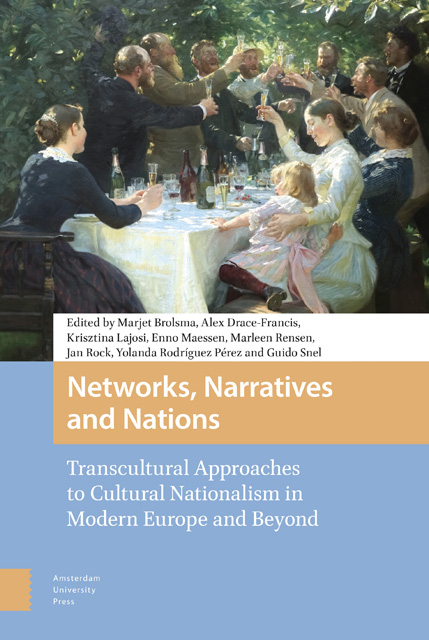 Networks, Narratives and Nations
Networks, Narratives and Nations Book contents
7 - A Network in Search of an Alternative Modernity Artists’ Colonies in Europe (1870–1914)
Published online by Cambridge University Press: 16 November 2022
Summary
Abstract
In late nineteenth- and early twentieth-century Europe, dozens of “artists’ colonies” were created by small groups of painters, writers and musicians who wanted to rediscover nature and rural traditions that urbanization and industrialization were effectively erasing. In these communities the artists came also to experiment with alternative ideals of modernity: equality, the emancipation of women, the importance of healthy bodies, criticism of the social order and the search for happiness. The artists’ colonies were the result of a new artistic mobility whose goal was to immerse artists in a peer group; most of them became vibrant centres of cultural cosmopolitanism.
Keywords: networks; alternative modernity; Europe; artists’ colonies; nature; rural traditions
In the spring of 1875, Robert Louis Stevenson accompanied his cousin, a painter, to Barbizon, and thence to a nearby village, Grez-sur-Loing, where Scandinavian artists had been settled for some years. During his stay, Stevenson fell deeply in love with another visitor, the American artist and painter, Fanny Osbourne. The following year, Swedish painter Carl Larsson, coming also from Barbizon, decided to stay in Grez-sur-Loing where he too met the love of his life, the painter Karine Bergöö. In 1885, while August Strindberg was conducting an anthropological and economic survey in the village that would form the second chapter of his book Bland Franska Bönder (Among Peasants in France), his wife Siri von Essen was in Grez-sur-Loing, living out a burning passion for Marie David, an aspiring Danish writer. Starting in the 1890s, some twenty Japanese painters, taking advantage of the incentives to travel in Europe during the Meiji era, also sojourned in Grez-sur-Loing.
In Europe at the beginning of the twentieth century, dozens of villages like Grez were becoming artists’ colonies. Painters, writers and musicians would set themselves up in such places – often for the summer when the studios and workshops in the city were shut, or even for several years. Some stayed there the rest of their lives. Often young and with few resources when they arrived, they would find lodging in local inns and farmhouses and could enjoy living more cheaply than in the city.
- Type
- Chapter
- Information
- Networks, Narratives and NationsTranscultural Approaches to Cultural Nationalism in Modern Europe and Beyond, pp. 97 - 104Publisher: Amsterdam University PressPrint publication year: 2022


